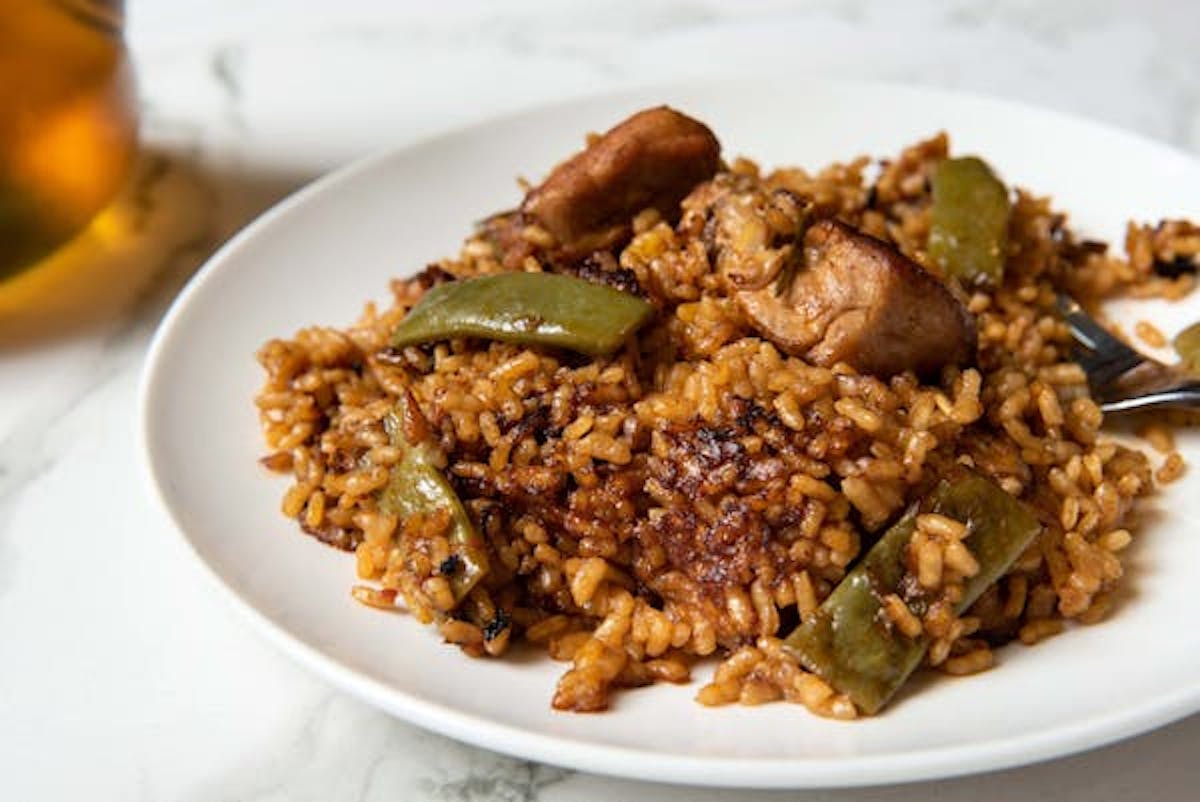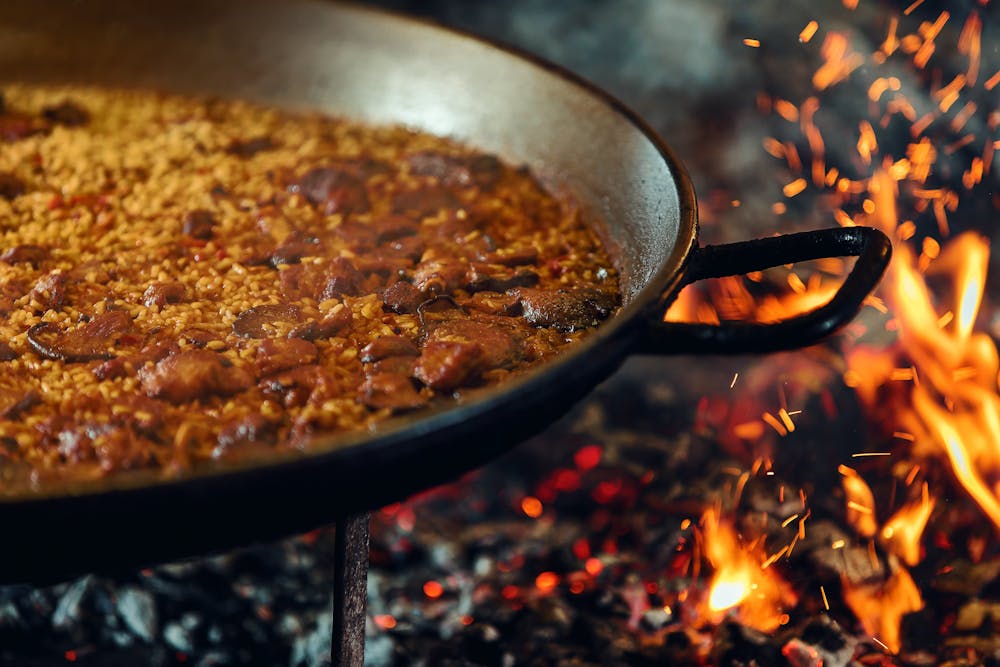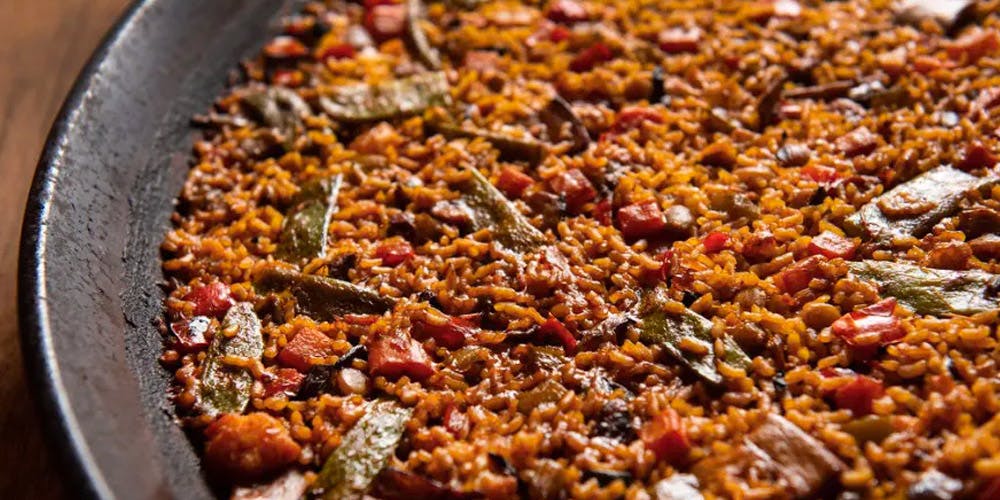How To ... Make and Eat Paella

Paella started as a humble countryside meal, cooked by farmers and herders in the fields and mountains surrounding Valencia and Alicante. Now it is world-famous, a symbol of Spanish cuisine so recognizable that it has even become its own emoji. Making paella is an art but it’s not impossible for a home cook – it just takes some care and patience. This is just an outline of the process – here's a recipe for a savory and rich vegetarian arroz, as well as all the tools and ingredients you need.

The Pan: The proper cookware for making paella and other arroces is a round flat pan called – you guessed it – a paella. The best paella pans are steel; stainless for minimal care, carbon steel for something more traditional – which ensures that heat is evenly distributed. Pans can range in size from 10 inches, which will serve two people, to more than a meter, for serving the masses. Check out paella pans here.
The Rice: One of the keys to great paella is using the proper rice – not just anything will do. Two Spanish varieties – bomba and calasparra – are favored for their unique ability to expand to 2-3 times their size, absorbing flavorful liquid as they grow, without getting soft or mushy. Buy our favorite Calasparra rice here.
The Ingredients: There is a time and a place for the traditional Valencian paella, made with rabbit, chicken, two kinds of beans, rosemary, and saffron. And then there’s a time and place for everything else – there are unlimited ways to construct an arroz, none of which are wrong. Get creative – start with meat if you want, layer in evenly-cut vegetables, and you can even add a healthy amount of sofrito for extra depth. Garlic, saffron, rosemary, pimentón, bay leaves – all will help add flavor to the rice, if used in balance.
The Liquid: Water is oftentimes the best for making a good paella, if you've built up enough flavor with your ingredients. If you happen to have a good homemade vegetable or meat stock on hand, use it – you’ll get a deeper flavor in the rice, but be sure to balance out adding salt. This is our favorite broth for making paella.
The Heat: Traditionally, paella is cooked over a wood fire outdoors – oftentimes starting with logs of wood and ending with a burst of high heat from dried vine clippings. This gives the paella a wonderful wood smoky aroma which complements the addition of pimentón, and the final kick of high heat helps ensure a crispy socarrat. In the absence of an outdoor cooking space, gas or electric heat will do – just make sure it’s even under the pan.
The Timing: Once the rice is in the pan, it’s time to set a clock and wait. This is both the easiest and most challenging moment of the process: patience is key. Every rice is different, based on its variety and its age, and oftentimes the best way to tell how long it should be cooked is to read the instructions on the bag. Even world famous chefs rely on the directions sometime! Just make sure to set your timer and then distract yourself elsewhere – pour a drink, prepare some allioli, or just meditate.
Get that soccarat. Near the end of cooking, with just a few minutes remaining, crank the heat up – that’s how you’ll get the delicious crunchy soccarat at the bottom of the rice.
How to eat: There’s only one perfect way to eat paella with a group – everyone gets a spoon (wooden, preferably) and digs right into the pan. Barring that, serving everyone on their own plate is acceptable, but just make sure everyone gets some of that prized soccarat.
Now with all this paella knowledge in hand, you need to get cooking! Here is one of our favorite recipes to test out.

